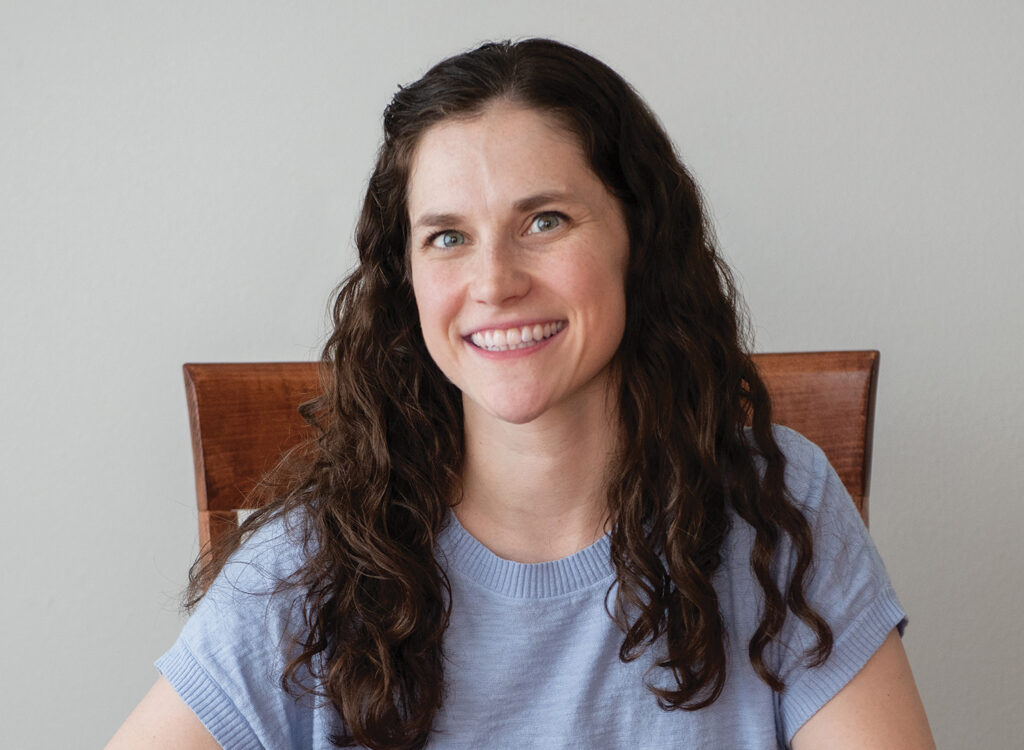Book excerpt: Mentor | Life and legacy of Joe Rosenfield

Former Grinnell College President George Drake’s new book on longtime Grinnell trustee and philanthropist Joe Rosenfield includes details of how Rosenfield, who ran Younkers and bankrolled Heritage Cablevision, coaxed billionaire friend Warren Buffett to serve on the Grinnell board at a time when a $78,000 endowment began growing to what is now close to $2 billion.
The book, just published by WriteBrain, the Business Record’s sister division, is a rare look into the business world in Des Moines and Grinnell. The project was backed by Jim Cownie, who founded Heritage Cablevision.
Here’s an excerpt from
“Mentor: Life and Legacy of Joe Rosenfield.”
——
As challenging as the late 1960s and early 1970s were for Grinnell College, it was a good era for Joe; this was when he first met and became a lifelong friend of Warren Buffett, who has said on several occasions that Joe was the most important person in his life next to his father. As Warren told business reporter Jason Zweig in 2000, “Joe is an extraordinarily generous and smart man. I’d never wanted to replace my real father — but if after Dad’s death I could have adopted Joe as my father, I would have.” This friendship was destined to transform the fortunes of Grinnell College.
Joe and Warren were introduced in 1967 by an Omaha couple, Dick and Betty Hiller. Betty had been married to Joe’s cousin Robert Lubetkin. Warren described this occasion in an interview conducted in his office on June 5, 2014:
They were good friends of ours and were talking one time, and they said, “You know, there’s a guy in Des Moines that you should know, you’d like him and he’d like you too,” and they arranged a trip over there. We just went for dinner … and naturally everybody hit it off with Joe … and I just thought he was fabulous. And I think it wasn’t too long after that he invited us to the big celebration at Grinnell when Martin Luther King was there. It was a big deal and we had a terrific time there. We just made a point of seeing more and more of him as the years went by.
For his part, Joe said about his meeting with Warren Buffett, “I could see what a fine mind he had and I was immediately attracted to him.” One reason for the Hillers’ insistence that Warren and Joe should connect is that Warren had just bought a department store in Baltimore, a purchase that gave the two men another common interest.
The Grinnell “celebration” Buffett mentions was a symposium kicking off a major fundraising campaign. It was held on October 26-27, 1967. Besides King, it featured Fred Friendly, President of CBS News; communications theorist Marshall McLuhan; molecular biologist and double Nobel laureate Linus Pauling; semanticist S.I. Hayakawa; painter Robert Rauschenberg; anthropologists Loren Eisley and Ashley Montague; newsmen Richard Rovere and Peter Hackes (a Grinnell graduate); musician Louis Armstrong; and journalist Willie Morris.
Drawing Warren Buffett to such an outstanding Grinnell event was Joe’s way of luring him on to the Board of Trustees — a task that he accomplished in January 1968. Warren was so taken with King’s speech that, years later, he acquired a personal copy and sent it to “all kinds of people” because “it was one of the greatest speeches I had ever heard.”
According to Fred Little, acquiring the essential members and building the endowment were Joe’s two Board passions; in drawing Warren Buffett to the Grinnell Board, he hit the jackpot on both goals. Buffett has said that agreeing to join the Grinnell Board was “one hundred percent Joe … it was one hundred percent the reason I went on the Board, there is no question about that.” On another occasion, Warren told me he really did not have much reason to care about Grinnell, but Joe asked him to serve Grinnell as a Board member and “I would do anything for Joe.”
Joe moved quickly to involve his new friend. He relinquished the chairmanship of the Finance Committee in favor of Buffett at a special meeting held at the Marriott Hotel in Chicago on January 18, 1970. This move was a stroke of genius; Buffett became deeply involved with Grinnell finances for several years, acquainting himself with the College’s fiscal needs as well as its operations. During those years, he was active on the Board and committed to strengthening the College despite his initial disinterest. In June 1973, he became Vice Chairman of the Board.
“Disinterest” in no way captures Warren Buffett’s commitment to partnering with Joe to build Grinnell’s endowment. It was a challenge that fascinated him, and he was totally enthralled by Joe’s commitment:
I mean Joe got me working on [the endowment] and he cared … far, far more about the performance of the Grinnell endowment than he did about his own net worth; and you know that is very rare when you get a Trustee who feels that way. And that enthusiasm and passion, it couldn’t help but spill over. So he asked me to help on it and kind of assured me that if the two of us came up with something, he would ram it through one way or another. And, of course, there was nobody more fun to work with than Joe, so we got started.
When asked if anyone else on the Board had influenced their investment decisions, Warren answered emphatically, “No.” When questioned about whether he and Joe disagreed about investments, he added:
I don’t think we ever disagreed. He thought he was one hundred percent on anything I came up with and I was certainly one hundred percent for anything he came up with. And, of course, when he came up with it, he used to make these risk-free deals, where if it went down, he would take a loss. I mean, it doesn’t have to be a very good idea to get my approval on something like that where you take a loss and the College takes the gain. So, we would talk fairly often at night and it was always about the College and particularly the endowment and that if he had an idea I was for it, and if I had an idea, he was for it. … Our idea of a perfect investment committee was Joe, me, and Helen Keller.
With Buffett’s arrival, the Board minutes reflect a much more aggressive investment philosophy. At Warren’s first meeting, Joe presented a policy for a new “aggressive investment fund.” Stockbroker Don Wilson, Joe’s 1925 Grinnell classmate and fellow Board member, was asked to suggest currently held stocks that could be shifted into the aggressive growth category. Eventually, this fund was set at $500,000. Another manifestation was the November 1969 decision to accept the recommendation of the annual audit to finally remove the dormitories from the endowment, a practice that long had prevailed in higher education. Dormitories produce revenue, so it is tempting to enhance the endowment by including them, even though dorm expenses usually exceed revenues, which they did at Grinnell.
Another aggressive move Joe and Warren made was deciding to embark on a gift annuity and deferred giving program. In November 1972, Buffett moved to establish a gift annuity program, and a year and a half later, the College hired Dick Jenkins to administer a full-blown deferred giving program. It was not cutting-edge, but with Joe and Warren driving the process, Grinnell moved into an area that has brought many large gifts to the College. Joe moved and Warren seconded approval of the administration’s recommendation that a campus pub be established, breaking the historic covenant that no alcoholic beverages would be officially served on the Grinnell College campus. Joe and Warren shared broadly liberal instincts.
Joe and Warren also proposed the most famous investment of the new era: the November 1975 purchase of a network television station, WDTN, in Dayton, Ohio. Buffett called Joe to tell him that AVCO was selling stations in Cincinnati and Dayton. Warren, as a board member of the Washington Post, could not buy either of them because, in so doing, he would hit the Post’s federal limit of five stations (the Post already had four.) Buffet said if such a purchase would have been good for him, it also would be good for the College. The Cincinnati station was quickly snapped up, but the Dayton station remained when the Board met in June 1975. Warren gave the Board an hour-and-a-half seminar on why the purchase of WDTN for $12.9 million was a great opportunity. The price was two and one-half times revenue at a time when most TV stations were selling for three to four times revenue.
Immediately following his pitch, the Board voted to invest $2,000,000 of College equity and borrow the rest of the money. The bulk of the discussion involved how to structure station management in a way that created a firewall between the station and the students, who, it was feared, would agitate to influence broadcast policy. That problem was solved in the creation of a separate board, chaired by Trustee Gardiner Dutton ’53.
Though Warren Buffett still ruminates about what might have been had the more profitable Cincinnati station been available, the College nevertheless made a huge profit when the station was sold in the early 1980s for $49,000,000, a 281 percent profit over a time when the stock market went up ninety percent. Added to that profit was the cash flow, which, using 1977 as an example, amounted to $1,700,000, much of which went to retiring debt.
For a college to purchase a network TV station was unprecedented; the move called national attention to Grinnell while underlining the commitment of the Board to unique investment opportunities. That commitment came only out of implicit trust in Joe Rosenfield and Warren Buffett. Joe did not trust committees to make key investment decisions, admitting that he and Warren “just bulled things through.” The most dramatic aspect of that trust goes against the generally accepted wisdom, then and now, that boards usually do badly if they do their own investing. Grinnell was unique not only because of the trust placed in two Board members but also in the fact that this trust led to spectacular investment success. This investment success colored many actions in an era when the Board often acted on instinct and trust rather than carefully articulated procedures. That was the Board I served on and later served under, and I believe that successful “instinct” was possible only because the Board revered and trusted Joe Rosenfield completely. He was the very matrix of the Board.
Before the Rosenfield/Buffett partnership, the endowment was beginning to prosper, but the gains were not extraordinary. In 1965, the endowment registered at $10,400,000, having grown by $2,500,000 over the preceding five years. By 1970, the dormitories had been subtracted from the endowment and were never again to compromise the calculation. From 1970 to 1975, the Grinnell endowment gained $17,500,000, closing at $28,200,000, and by 1980, it was $43,700,000 — a $15,500,000 growth in five years. The really dramatic upward spiral began in the early 1980s with a gain for the decade of $143,837,000 to close at $287,537,000. The magic of Joe and Warren continued even more spectacularly in the 1990s, but that is a story for another section.
With Joe at the helm, the College saw continuing unprecedented endowment growth, perhaps fulfilling what Joe told Gardiner Dutton when he joined the Board in 1970: “Our job is to make this institution financially impregnable.” Warren Buffett once said of Joe’s investment acumen: “Joe is a triumph of rationality over convention.” One of the ways Joe applied his rationality was to invest in the ventures of young men in whom he sensed unusual qualities of character, innovation and intelligence. This pattern fueled his decision to enlist another Grinnell Trustee, Sam Rosenthal, to join him in backing a young Grinnell alumnus and fellow Trustee Bob Noyce ’49 when Noyce decided to turn his invention of the microchip into a new company called Intel. Joe and Sam each contributed $100,000 and the College’s endowment contributed another $100,000, amounting to 10 percent of Intel’s initial capital. Joe and Sam told the Board, “If it goes down it is our loss and if it goes up it’s the College’s gain, absolutely.” This is a classic example of how Joe cared more about the College’s interests than his own. Grinnell made $14,000,000, a 4,583 percent profit, from Joe’s and Sam’s venture capital. The only downside is that, in the 1980s, the College sold its Intel shares because Bob Noyce believed too much of the College’s endowment was vulnerable to Intel’s fortunes; this move forsook billions of dollars had the College retained its Intel investment.









